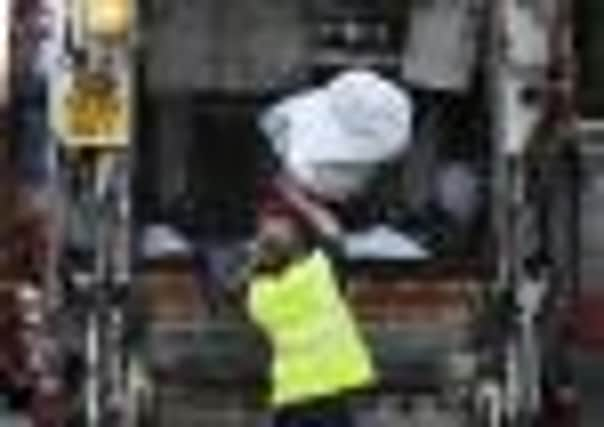What happens after you leave your recycling on the kerbside? We follow it on a journey around Britain


Everyone knows that crushing up, washing out and packing away every last bit of recyclable material is the right thing to do with all the post-festive waste.
With the council providing up to nine recycling containers in city homes, there is no excuse for not doing your bit for the environment.
Advertisement
Hide AdAdvertisement
Hide AdBut whatever lengths we go to at home to make sure our waste isn’t wasted, we won’t come even close to matching the miles it clocks up once it leaves our street.
The Capital’s household rubbish travels thousands of miles to all corners of the UK before it is processed for reuse. With more than 1000 tonnes of recycling being collected in the city every week, all the miles clocked up by gas-guzzling lorries delivering our waste to processing plants up to 360 miles away all adds up to one enormous carbon footprint.
It is a situation that has raised concerns among some environmentalists and raises serious questions about the country’s ability to achieve Alex Salmond’s plans for a Zero Waste Scotland.
From Edinburgh, glass products are sent to Leeds – a journey of 214 miles each way – while paper makes the trip to Norfolk. Batteries are processed in Darlaston, in the West Midlands. Our throwaway plastics go to Teesside before traversing another 140 miles to Lincolnshire, where it finally is recycled.
So just how big a dent do all these road miles put in the Capital’s green credentials? Does it mean all our efforts to go green are simply a waste of time?
The city council says it simply has no choice but to send the waste it recycles out of Scotland because the facilities to deal with it just don’t exist in this country.
However, it is adamant that our efforts are worthwhile as they divert 70,000 tonnes of waste a year away from landfill sites, helping produce a huge array of products, from new clothes to news- papers like the Evening News.
“The waste collected from red and blue boxes is sent further afield as the processing facilities simply do not exist in this country,” says a council spokesman. “However, we are confident that the small environmental cost associated with transporting this waste is far outweighed by the huge benefits that recycling brings to the environment.”
Advertisement
Hide AdAdvertisement
Hide AdNo-one disputes that ferrying waste to the far corners of England and Wales for recycling is better than sending it to landfill.
Research by the Government’s waste and resources action programme suggested any recycling, even when transported long distances to be processed, was better for the environment than landfill, which was the worst option.
Even in crude financial terms, landfill taxes mean that it is a better choice for Edinburgh’s stretched city budget.
For every tonne of household waste, the city council spends £100 on landfill, excluding transport costs, compared with overall recycling costs of just £75 per tonne, inclusive of transportation.
Environmentalists point out that producing plastic, for instance, in the first place is such an energy-intensive process that recycling, even in these circumstances, is still a better option.
Stan Blackley, chief executive of Friends of the Earth Scotland, says: “Edinburgh is not the worst. They put in a lot of effort, but we produce too much rubbish in the first place and the number of high carbon journeys to dispose of it is just another disappointment.”
One of the reasons, he argues, is that “the system is too complicated”, adding: “It puts people off, so there is no motivation. The colour scheme is just too difficult to follow and we don’t have kerbside collections over much of the city. We could be doing so much better”
The EU has set a target that 50 per cent of waste should be recycled by 2020, but the SNP went one step further, aiming to have 50 per cent being recycled by 2013. Edinburgh aims to have 50 per cent by 2015, two years behind the government’s target. The current recycling figure is just over one third of waste generated.
Advertisement
Hide AdAdvertisement
Hide AdEdinburgh Green councillor Steve Burgess insists the next step has to be creating better processing facilities in Scotland. “All of Scotland’s waste could potentially be dealt with in one facility,” he says. “But it requires investment from the government.”
It is a goal shared by Ian Gulland, director of Zero Waste Scotland, which is a government initiative.
He says: “It is about getting the most value out of the resources we use. There are opportunities to use the materials we collect here in Scotland by putting them back in the manufacturing process here too and keeping their value in our economy. We plan to invest £5 million into a factory for processing waste plastic.”
According to Friends of the Earth, it is all about changing our mindset when it comes to seeing waste as rubbish.
“The waste that we produce should be dealt with here, by people in Scotland getting a decent wage,” says Mr Blackley. “There is a naive view of what waste is. We need to treat it as a resource that can help us make money, make jobs and help the environment.”